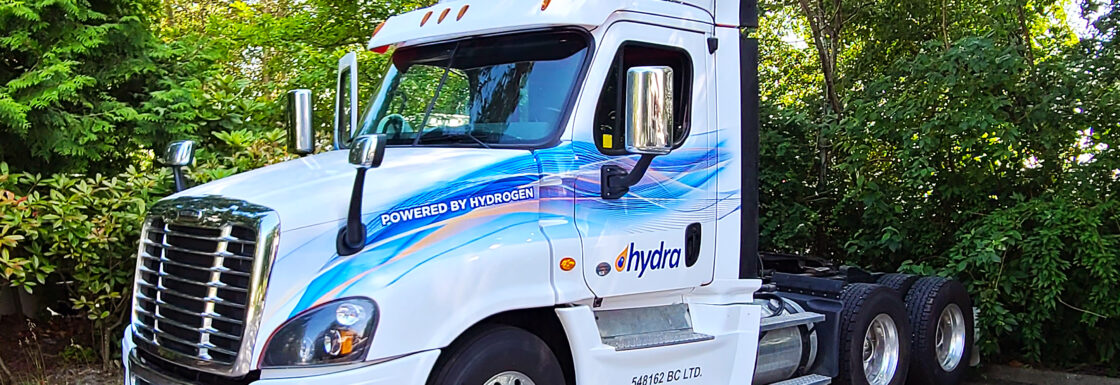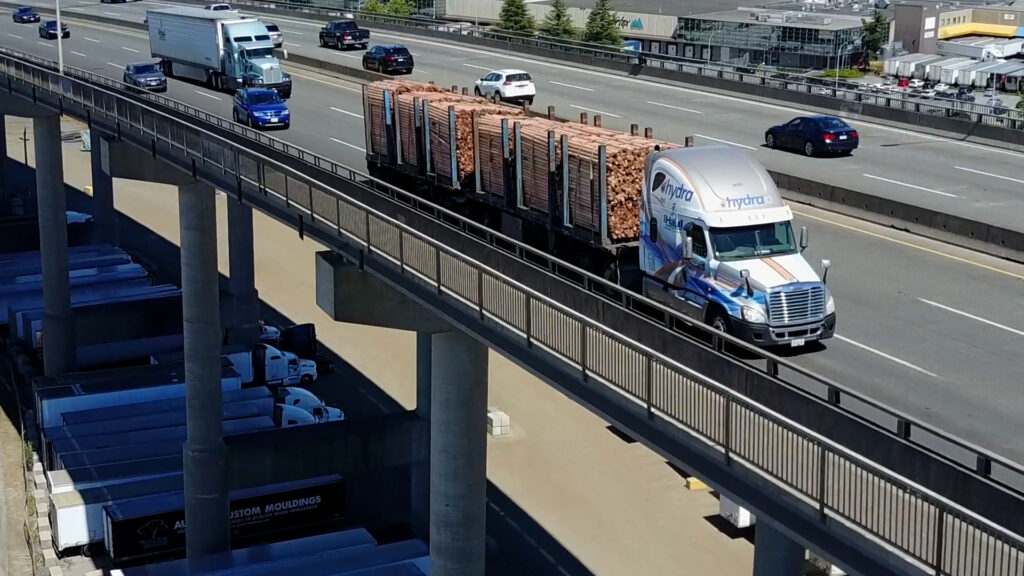A Heavy-Duty Issue

Hydra Energy CEO Jessica Verhagen was added to the Clean50 list for 2021 in recognition of the innovation and powerful impact of Hydra’s business model, which provides diesel fleet operators (truck or bus) the ability to obtain an engine retrofit at no charge to them, and then use Hydra supplied hydrogen (at a cost lower than diesel) to power their fleet. This story is a poster child for the Clean50’s raison d’etre: Going “green” can often actually save operators money AND eliminate GHGs simultaneously! Below Jessica explains why prompt action is so critical.
Beneath the biggest challenge lies the biggest opportunities. Heavy-duty transportation is one of the most difficult sectors to reduce greenhouse gas emissions. With few cost-effective options, the graph below shows heavy-duty vehicle emissions tripled from 1991 to 2019 – even as passenger vehicle emissions during this same time have steadily declined. Heavy-duty trucks now make up over 16% of Canada’s GHG emissions.

In response to the climate emergency, Canada increased its GHG emission reduction target in July to 40‑45% below 2005 levels by 2030. Subsequently, the problem of out-paced heavy-duty vehicle emissions was ‘solved’ as various provinces stepped up with policies for only zero-emission vehicles to be purchased by 2035.
…Hold up, since when did someone say ‘emergency’ – and then wait over a dozen years to spring into action?
How exactly is Canada getting to its 2030 target without doing anything about emissions from trucks? Every single heavy-duty truck sold from January 1, 2021, would need to be a zero-emission vehicle for Canada to hit the 2030 target… FYI that date is in the past already. The lifespan for a regular heavy-duty truck is about 25 years, and if a brand-new diesel truck is bought in 2034, it’s not simply headed to the scrapyard the next year. It will be used for its entire lifespan before a zero-emission replacement will be purchased. That brings us to 2059 with high-polluting vehicles still on the road.
How is it that we’ve got passenger vehicles heading in the right direction to bend the emissions curve down but when the vehicles get larger, we’re stumped?

It’s more complex than at first blush. I talk to a lot of fleets about alternatives to diesel trucks and there aren’t a lot of options on the market; what’s out there is significantly more expensive or performs more poorly than diesel. Unlike individual consumers that get rebates for going electric, we are talking largely about small businesses with small profit margins. About 90% of trucking companies have less than five trucks so it’s safe to say that they don’t have an R&D department. Most companies that I’ve talked to want to be included in solutions to climate change but can’t afford it. The BC Trucking Association’s CEO, Dave Earle, estimates that the average year for a heavy commercial truck in B.C. is 2008 with a 3% turnover per year. Even if the technology, infrastructure and fuels were widely available today, which they’re not, it would take 25 years to convert the entire fleet.
These fleets need solutions that don’t break the bank, that actually work, and can start addressing GHG emissions today. The CleanBC program that provides a grant of up to $15,000 per truck for equipment that reduces GHG emissions is something tangible to get fleets started on improving the trucks that they already have. For example, Hydra Energy offers heavy-duty vehicle retrofits so their trucks can partially run off low-carbon hydrogen. The charge for this is at the same price or lower than diesel. Affordable and effective solutions to lowering the carbon that current fleets emit are available today, we just need to start pointing them out.

I’m very excited to see how technology evolves for new trucks over the next decade. Maybe we see battery weights drop dramatically so they don’t affect payload. Perhaps cold-weather performance improves so it doesn’t limit the range of how far the trucks can go. Hydrogen fuel cells are already very efficient; hopefully, we see lower-cost materials going in to reduce their price.
In the meantime, let’s take steps to enable significant emission reductions with the trucks already on the roads. We don’t need to start from scratch to make progress.














